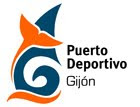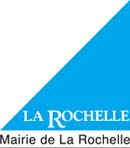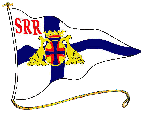One month before the start of the Mini Pavois 2010, it is interesting to consider the possible weather conditions on this 800 miles race. Recall that a first leg of 300 miles will take 60 competitors from La Rochelle (Charente-Maritime) to Gijón (Asturias), then a sailing back to La Rochelle (Charente-Maritime) of 500 miles with a buoy to turn yet to be determined by the Race Director. So what kind of weather can we expect? Q & A Game with Eric Mas - Meteo Consult, in which we learn that tactics and strategies will be decisive during this race.
What kind of weather should we expect during the 2010 Mini Pavois?
Eric Mas: “The month of May is a big step forward in the summer to what is the weather conditions in the Bay of Biscay. We may regret that there are very small chances of NE wind that enables to sail in a stable situation and with limited wave heights by a relatively small fetch. This sparsity is due to the very few cold air reserves that make the area of high pressure - often stopped, in winter over Northern Europe. We can be pleased of the low risks of strong winds. The gales from SW are almost totally excluded. The very deep lows will shift, now, northward and will avoid the Bay of Biscay most of the time. Less SW but still fairly frequent westerly wind. The chance for it to exceed force 6 is only 5%. These westerly winds provide an opportunity to break the routine in a fast race with upwind sailing - but without having to tack that much, on the way between La Rochelle and Gijón, and abeam or reaching for the return leg to La Rochelle via Brittany. These conditions represent 40% of cases. All other wind directions are possible, but less permanently installed. The tactics will gain the upper hand to use the often weak and variable winds. We shall even fear the calm in 3% of cases while the axis of the Azores ridge of high pressure moves along the direct route."
What kind of surprises can there be this season?
Eric Mas: "Few surprises to be awaited. However, monitor the stormy low that does not move for a few dozen hours in the southern Bay. It does not establish a strong wind, but it can cause very violent gusts because invasions of cold air aloft are still possible in May. Now it is the gradient and the shear between the mild and moist air of low atmospheric layers and cold above layers that trigger the strongest squalls."
Having a turning point in southern Britain before sailing back to La Rochelle would confront the competitors to other difficulties, what would they be?
Eric Mas: "From a meteorological perspective, there is no danger in returning to the coast of Brittany in this season, but there are more convoluted situations. The coastal effects complicate the wind flow and we cannot rely on strong thermal breezes, the season temperature is still a bit too neutral. Sailing is also complicated because of the tidal currents even if the tidal range will be low until May, 10th."
Can we talk about a full and varied racing course (offshore and coastal)?
Eric Mas: "According to conditions in May, we can expect with high probability, that the path through a turning mark buoy in southern Brittany is doable. And then that it is a race that is actually ideal for offshore sailing in the Bay of Biscay, which opens widely the game of paths choices before arriving in Gijón's Bay traps. And it’s the same for the sailing back to Brittany that gives the opportunity to make routing strategies for 48 hours. The return to La Rochelle along the coasts of Brittany and Vendée requires a series of tactical decisions to integrate multiple, besides marking the opponents, all benefits and constraints of the wind, waves and currents knowing how variable they are along the coasts."











.gif)






